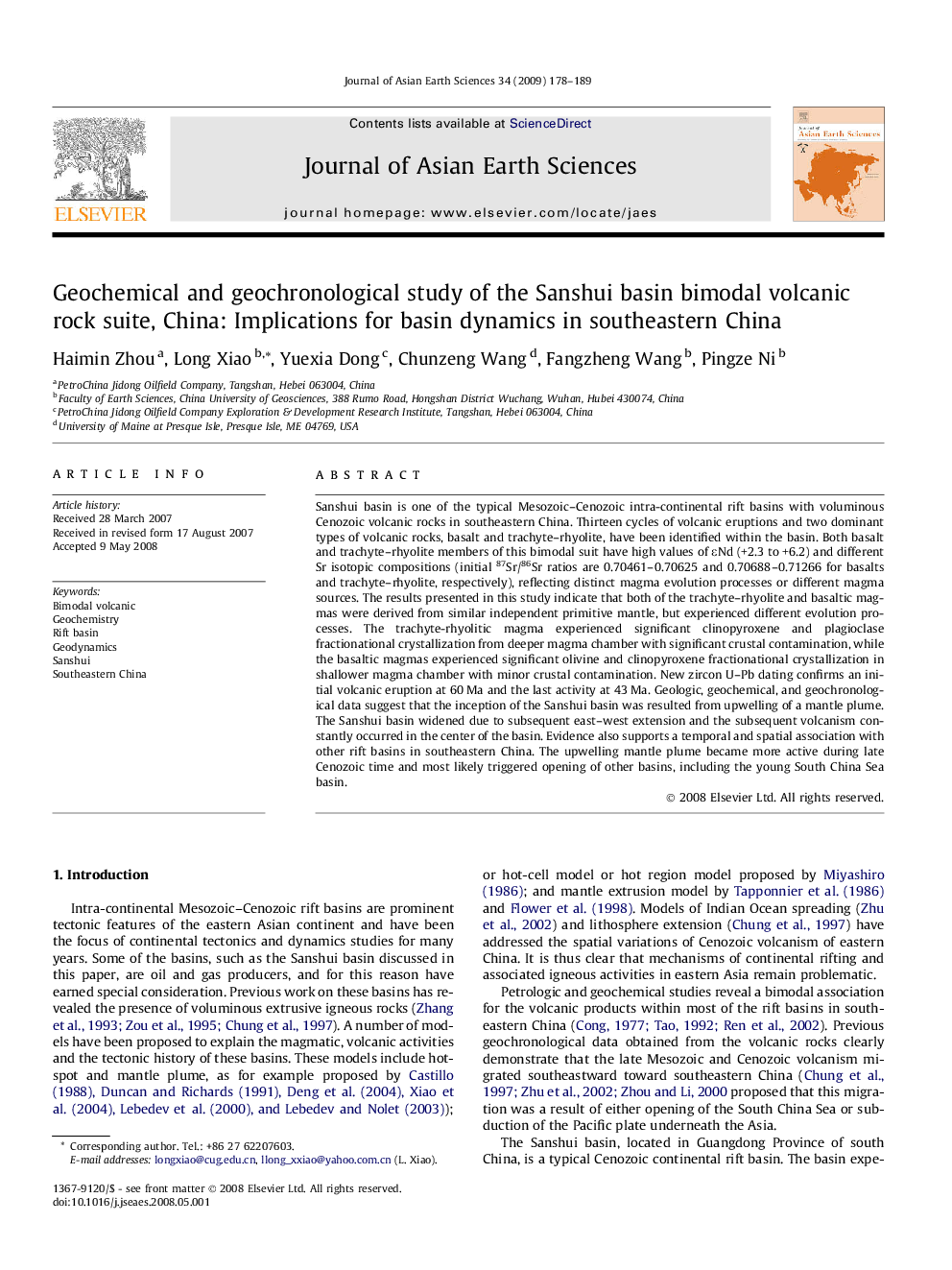| کد مقاله | کد نشریه | سال انتشار | مقاله انگلیسی | نسخه تمام متن |
|---|---|---|---|---|
| 4732280 | 1356854 | 2009 | 12 صفحه PDF | دانلود رایگان |

Sanshui basin is one of the typical Mesozoic–Cenozoic intra-continental rift basins with voluminous Cenozoic volcanic rocks in southeastern China. Thirteen cycles of volcanic eruptions and two dominant types of volcanic rocks, basalt and trachyte–rhyolite, have been identified within the basin. Both basalt and trachyte–rhyolite members of this bimodal suit have high values of εNd (+2.3 to +6.2) and different Sr isotopic compositions (initial 87Sr/86Sr ratios are 0.70461–0.70625 and 0.70688–0.71266 for basalts and trachyte–rhyolite, respectively), reflecting distinct magma evolution processes or different magma sources. The results presented in this study indicate that both of the trachyte–rhyolite and basaltic magmas were derived from similar independent primitive mantle, but experienced different evolution processes. The trachyte-rhyolitic magma experienced significant clinopyroxene and plagioclase fractionational crystallization from deeper magma chamber with significant crustal contamination, while the basaltic magmas experienced significant olivine and clinopyroxene fractionational crystallization in shallower magma chamber with minor crustal contamination. New zircon U–Pb dating confirms an initial volcanic eruption at 60 Ma and the last activity at 43 Ma. Geologic, geochemical, and geochronological data suggest that the inception of the Sanshui basin was resulted from upwelling of a mantle plume. The Sanshui basin widened due to subsequent east–west extension and the subsequent volcanism constantly occurred in the center of the basin. Evidence also supports a temporal and spatial association with other rift basins in southeastern China. The upwelling mantle plume became more active during late Cenozoic time and most likely triggered opening of other basins, including the young South China Sea basin.
Journal: Journal of Asian Earth Sciences - Volume 34, Issue 2, February 2009, Pages 178–189